Western Canada is well known for such iconic attractions as Lake Louise, Banff National Park and the cities of Vancouver and Calgary. However, well off the beaten track, the country’s western-most province, British Columbia, is a treasure trove of secluded islands, historic settlements, lush rainforest and spectacular parks. Here James Butler, Canada and Alaska Programme Manager, shares his favourite undiscovered places.
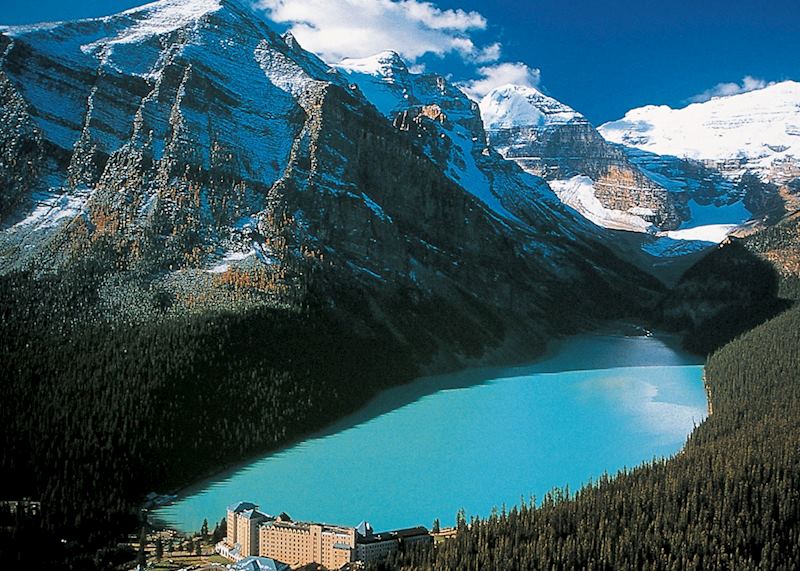
Stewart
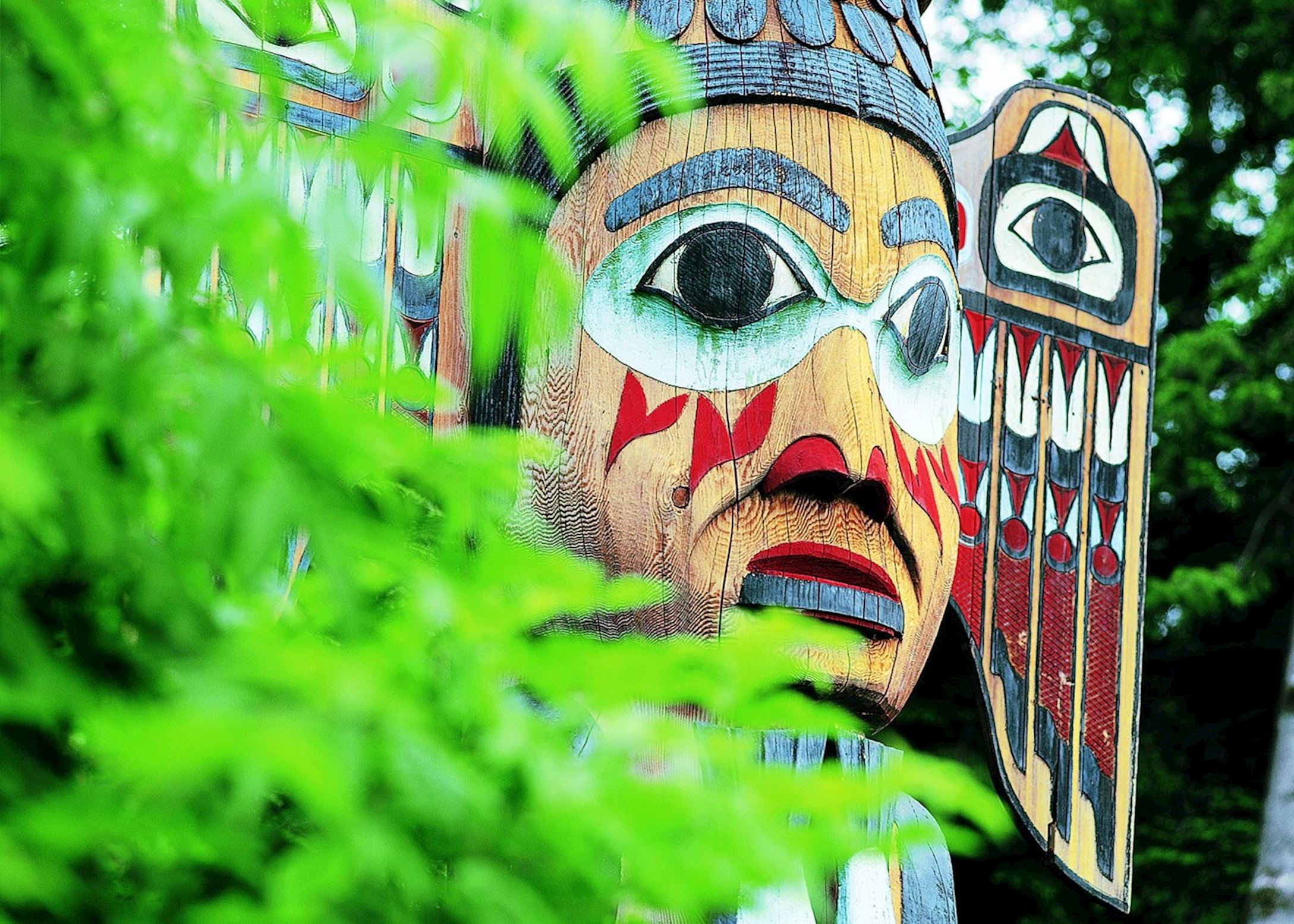 Well off the beaten track and surrounded by towering glacier-capped mountains, the little town of Stewart (1) offers a delightful insight into life in the remote northern reaches of British Columbia. The town sits on the edge of the Portland Canal and the short drive to nearby Hyder, across the border in Alaska, affords spectacular views of the massive Salmon Glacier. A former gold rush town now almost deserted, Hyder marks the end of the road network and its creaky buildings and isolated position give it the air of the old Wild West. In autumn salmon spawn at nearby Fish Creek and attract hordes of grizzly and black bears, making this a wonderful spot to see the animals up close. The region also has a vibrant First Nations culture in villages such as New Aiyansh which is famous for its colourful totem poles.
Well off the beaten track and surrounded by towering glacier-capped mountains, the little town of Stewart (1) offers a delightful insight into life in the remote northern reaches of British Columbia. The town sits on the edge of the Portland Canal and the short drive to nearby Hyder, across the border in Alaska, affords spectacular views of the massive Salmon Glacier. A former gold rush town now almost deserted, Hyder marks the end of the road network and its creaky buildings and isolated position give it the air of the old Wild West. In autumn salmon spawn at nearby Fish Creek and attract hordes of grizzly and black bears, making this a wonderful spot to see the animals up close. The region also has a vibrant First Nations culture in villages such as New Aiyansh which is famous for its colourful totem poles.
I was unsure what to expect before I arrived at the Ripley Creek Inn in Stewart. Though fairly simple, any lack of luxury was more than compensated for with the friendly hospitality that is typical of remote communities. This small inn has just 32 rooms situated in four separate historic buildings. Once the former home of Klondike Kate, the property is particularly evocative of the gold rush era. Although the scenery around Stewart is breathtaking, my lasting memory will be of the many local characters I met while there. From rugged old timers to members of the neighbouring First Nations communities, all had a tale to tell and provided me with a fascinating glimpse into life in this remote backwater.
Tweedsmuir Provincial Park
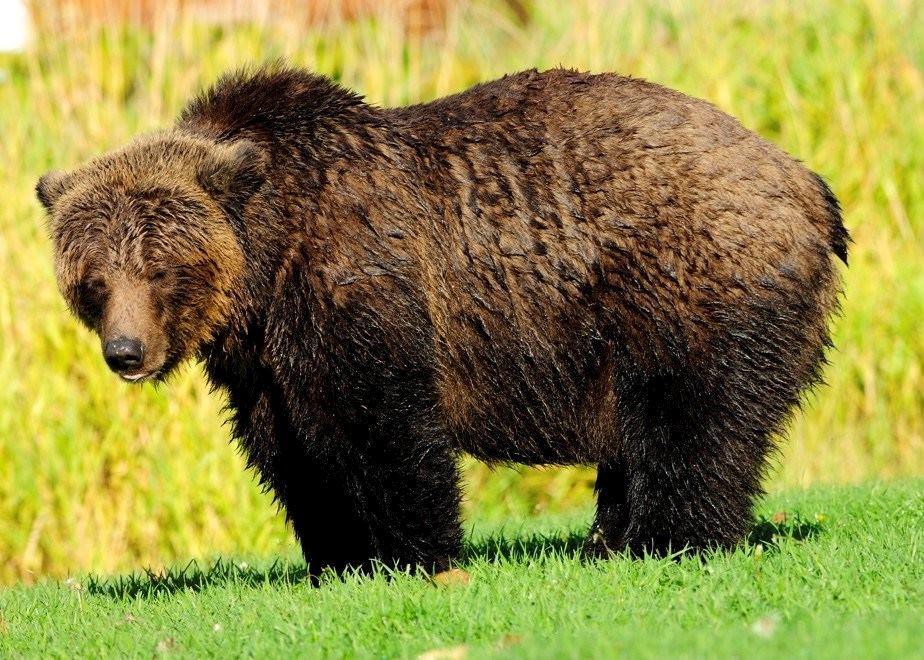 Tweedsmuir Provincial Park (2), lying at the heart of the largest tract of temperate rainforest left on Earth, is renowned for its stunning scenery and prolific wildlife. This is where the ancient Rainbow Mountains, with their weathered and rounded peaks, meet the jagged pinnacles of the younger Coast Mountains. The remote location of the park means it is little visited and those who make it here are frequently rewarded with having this breathtaking region all to themselves. Visit in autumn and you will witness the incredible salmon migration. The fish travel up river to spawn, then die in their millions attracting bears, eagles and wolves who feast on the remains.
Tweedsmuir Provincial Park (2), lying at the heart of the largest tract of temperate rainforest left on Earth, is renowned for its stunning scenery and prolific wildlife. This is where the ancient Rainbow Mountains, with their weathered and rounded peaks, meet the jagged pinnacles of the younger Coast Mountains. The remote location of the park means it is little visited and those who make it here are frequently rewarded with having this breathtaking region all to themselves. Visit in autumn and you will witness the incredible salmon migration. The fish travel up river to spawn, then die in their millions attracting bears, eagles and wolves who feast on the remains.
Tweedsmuir Park Lodge (3) lies at the heart of the Bella Coola Valley on 60 acres of wilderness land, amidst scenery which immediately took my breath away. Originally built in 1929 as a hunting lodge, it is now a modern retreat with all the charm of a traditional lodge. Huge log fires and an enormous lounge create a relaxed and welcoming atmosphere, while the individual chalets and cabins offer a little slice of backcountry heaven. The lodge organises guided walks, fishing trips and First Nations history tours but the highlight for me was seeing grizzly bears at eye level from boats on the Atnarko River. The bears flourish here and can even be seen nibbling at the newly mown grass of the lodge’s lawn. After a day exploring there’s a spa and outdoor hot tub to enjoy, or simply sit back with a drink on the deck and soak up the breathtaking views of aptly named Mount Stupendous.
Port McNeill
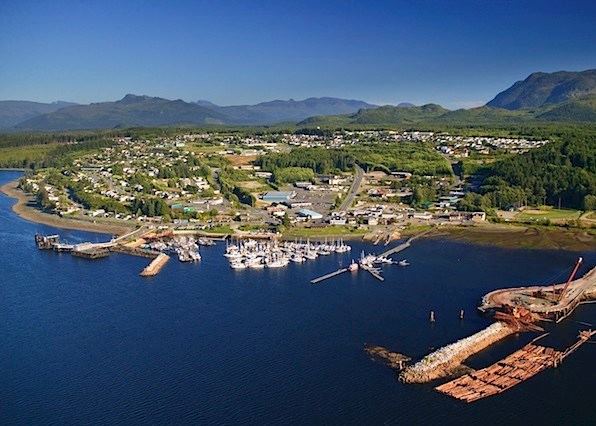 You will get a real sense of getting away from it all in the small town of Port McNeill (4) in northern Vancouver Island. Surrounded by grand peaks and lush rainforest, it is a great place to hike, fish, dive, kayak or go whale watching. During summer whales can frequently be seen in the straits, while black bears are a common sight around the town. Just offshore lies little Cormorant Island, home to a thriving First Nations community, where you can watch canoes and totem poles being carved and visit the splendid museum. Also worth visiting is Shephard's Garden, four acres of spectacular planting created by a local family.
You will get a real sense of getting away from it all in the small town of Port McNeill (4) in northern Vancouver Island. Surrounded by grand peaks and lush rainforest, it is a great place to hike, fish, dive, kayak or go whale watching. During summer whales can frequently be seen in the straits, while black bears are a common sight around the town. Just offshore lies little Cormorant Island, home to a thriving First Nations community, where you can watch canoes and totem poles being carved and visit the splendid museum. Also worth visiting is Shephard's Garden, four acres of spectacular planting created by a local family.
As its name suggests, At Water’s Edge is a beachfront property with wonderful views of Broughton Strait, Malcolm Island and the Coast Mountains. This lovely modern B&B is run by the ever-friendly Karen and Chris who are happy to recommend local sights and help plan activities. Each room has dramatic views and a covered deck from where you can enjoy a glass of wine in the evening and watch for blue herons, whales, black bears and bald eagles.
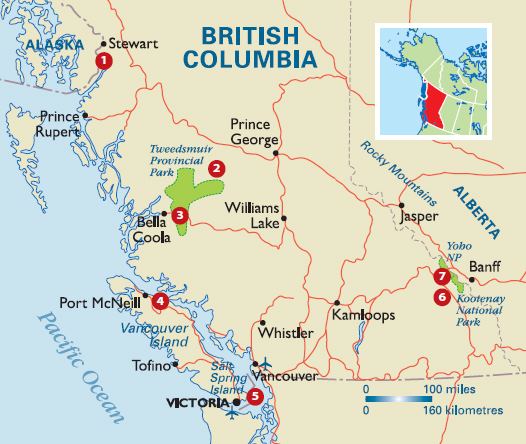
Salt Spring Island
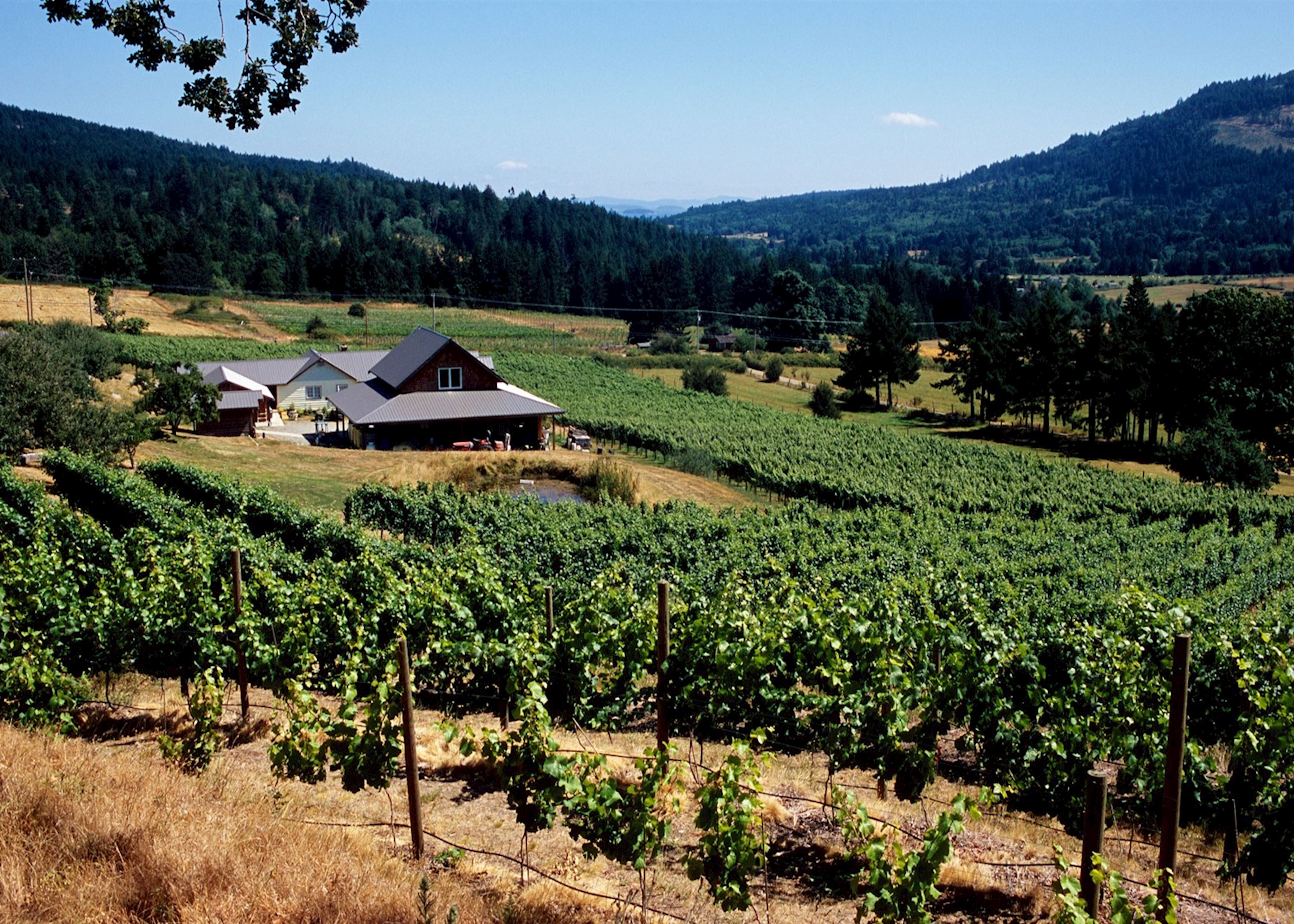 Salt Spring Island (5) epitomises British Columbia’s natural beauty and is renowned for its mild climate and the warmth and creativity of its people. A perfect place to relax and unwind, Salt Spring was originally settled by the Salish First Nations people over a thousand years ago but is known today for its thriving farms and many galleries. Everything from apples and organic cheese to some of Canada’s best lamb and wool are grown and produced here, while the large number of resident artists and craftspeople and the numerous craft fairs and concerts they organise, have given the island a national reputation as an artists’ colony.
Salt Spring Island (5) epitomises British Columbia’s natural beauty and is renowned for its mild climate and the warmth and creativity of its people. A perfect place to relax and unwind, Salt Spring was originally settled by the Salish First Nations people over a thousand years ago but is known today for its thriving farms and many galleries. Everything from apples and organic cheese to some of Canada’s best lamb and wool are grown and produced here, while the large number of resident artists and craftspeople and the numerous craft fairs and concerts they organise, have given the island a national reputation as an artists’ colony.
It’s not all hippy hang outs though as I found at the rather indulgent Hastings House, a small luxurious retreat, situated in immaculately landscaped gardens on the waterfront. A member of Small Luxury Hotels of the World, this magnificent 16th-century-style manor house offers individually-designed accommodation in seven charming buildings scattered across the estate and a superb restaurant widely regarded as one of BC’s finest. My room had a wood burning fireplace and a private sitting room area which gave delightful views of the harbour and forest. The property also offers an excellent spa, though reservations need to be made well in advance.
Kootenay National Park
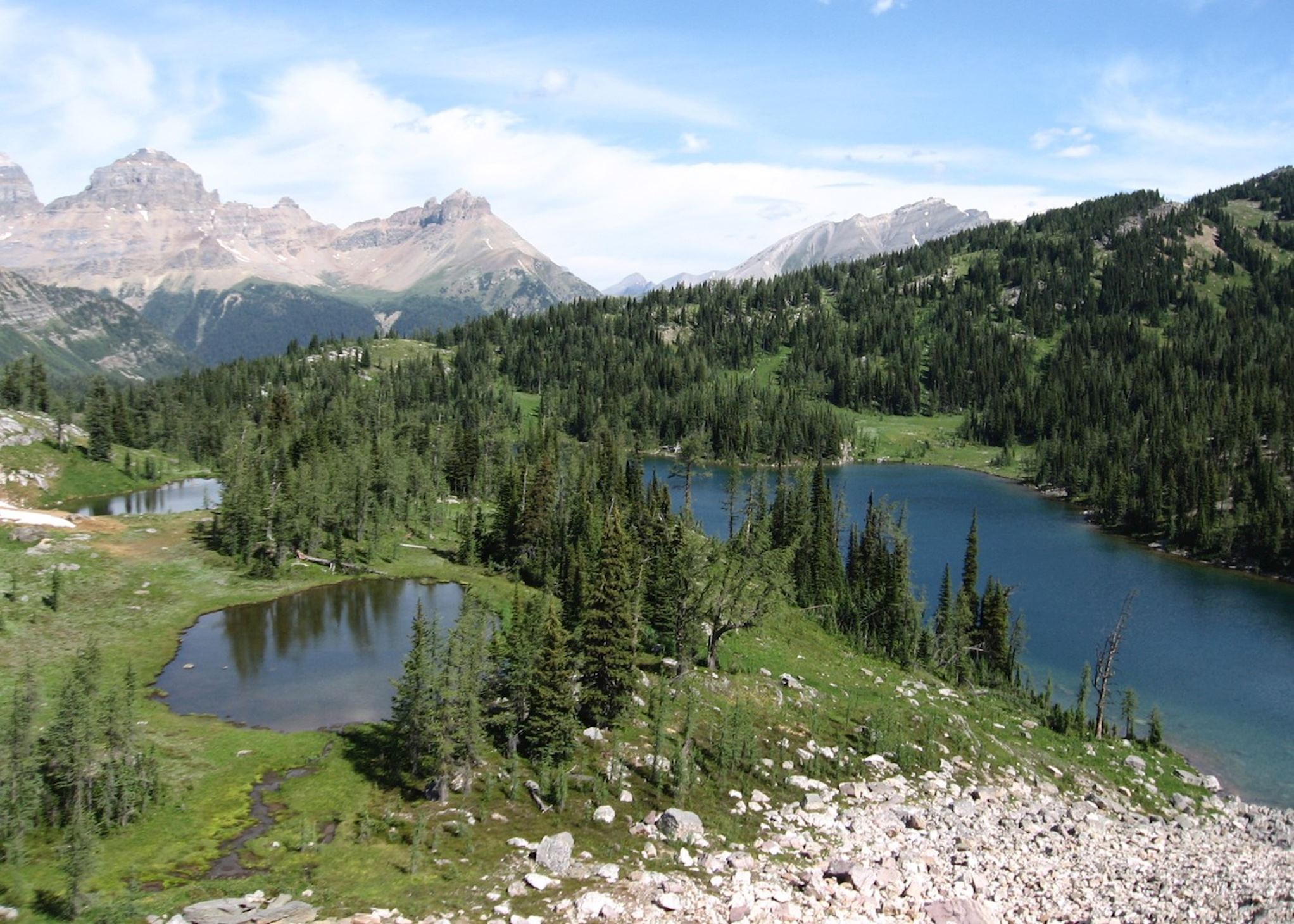 Established in 1920, Kootenay National Park (6) comprises 1,406 square kilometres of stunning mountain scenery. Hanging glaciers, breathtaking summits, the limestone Marble Canyon and natural mineral pools at Radium Hot Springs are just some of the many attractions the park has to offer. This was once a meeting place for different tribes, traders and explorers, and ancient pictographs and paint pots used by the Kootenai Indians to decorate themselves and their tipis have been found here. After driving through the spectacular scenery of the park I was delighted to realise that this magnificent setting was going to be my home for the next few days.
Established in 1920, Kootenay National Park (6) comprises 1,406 square kilometres of stunning mountain scenery. Hanging glaciers, breathtaking summits, the limestone Marble Canyon and natural mineral pools at Radium Hot Springs are just some of the many attractions the park has to offer. This was once a meeting place for different tribes, traders and explorers, and ancient pictographs and paint pots used by the Kootenai Indians to decorate themselves and their tipis have been found here. After driving through the spectacular scenery of the park I was delighted to realise that this magnificent setting was going to be my home for the next few days.
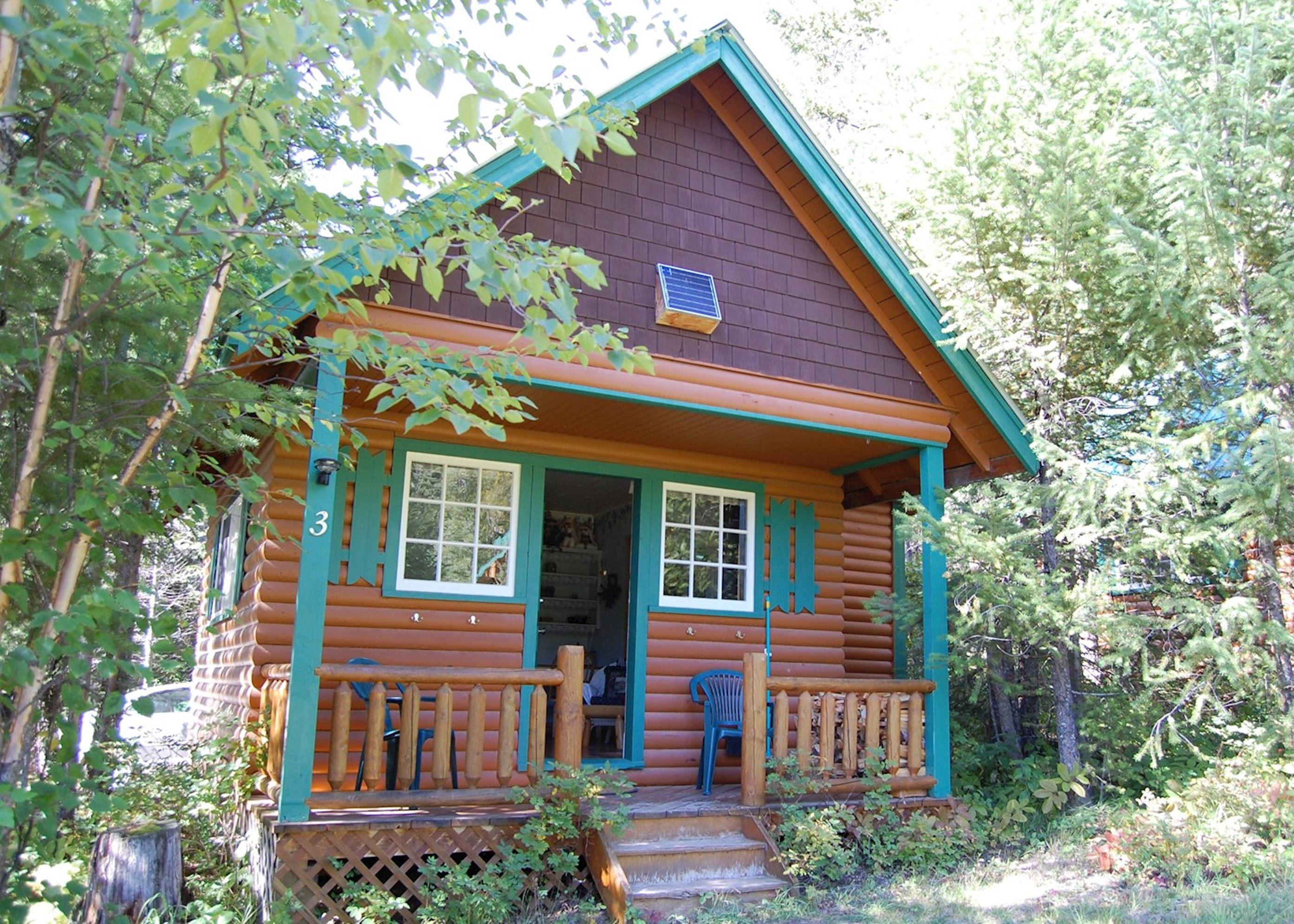 Cross River Cabins (7) are a real find. A unique wilderness centre with an emphasis on nature, environmentally friendly practices and genuine warm hospitality, you can choose to stay in traditional cabins or authentic First Nations tipis sleeping up to eight people. The spacious main lodge is surrounded by beautiful pine trees, wild flowers and mountain streams and offers delicious home-cooked meals and a convivial meeting place for guests.
Cross River Cabins (7) are a real find. A unique wilderness centre with an emphasis on nature, environmentally friendly practices and genuine warm hospitality, you can choose to stay in traditional cabins or authentic First Nations tipis sleeping up to eight people. The spacious main lodge is surrounded by beautiful pine trees, wild flowers and mountain streams and offers delicious home-cooked meals and a convivial meeting place for guests.
A stay here gives visitors the chance to learn about the surrounding area and its history on guided hikes or canoeing or river rafting trips. The highlight for me however, was meeting a First Nations elder and getting a taste of traditional life; that and relaxing in the wood-fired hot tub whilst drinking in the views. Mostly though, I shall never forget the people here who make this place a veritable jewel in the glorious crown that is the Kootenay Rockies.
Was this useful?





